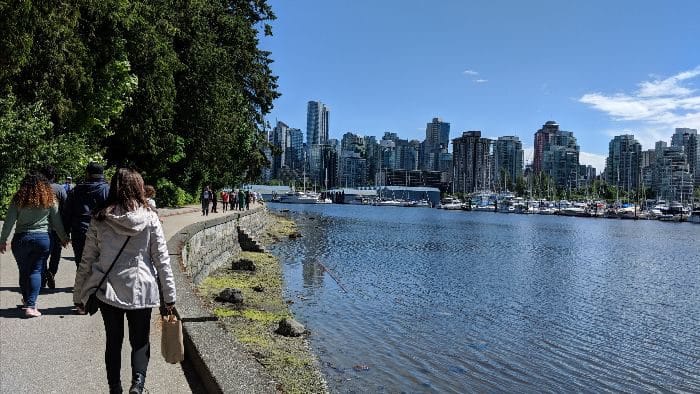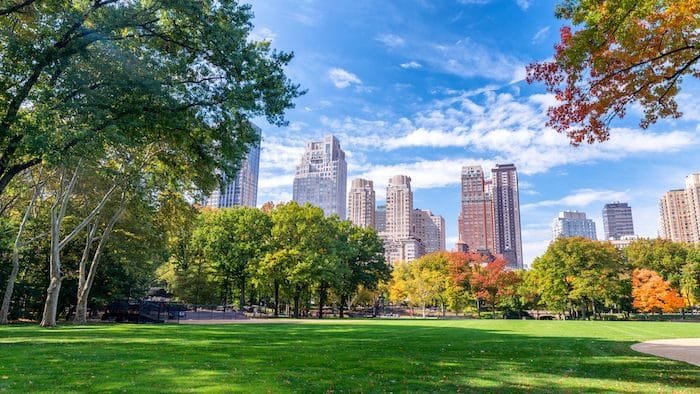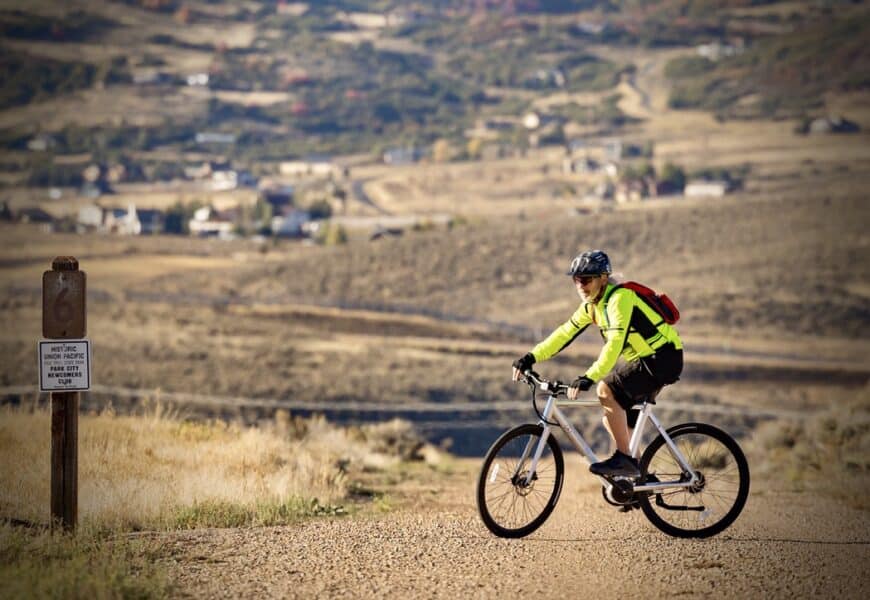Sometimes, when I think about how our world is so much different than it was decades ago, I can’t believe all the ways we’re technologically connected to each other.
Through our phones. Through our computers. Through our apps. Through a Zoom meeting that can transport us from our homes and offices to another one a half-a-world away.
A push of a button and a stable WiFi signal and—voila!—you can chat and work with anyone anywhere. Amazing.
Oftentimes, though, I think about some of the connections we’ve lost over the years—perhaps at the expense of all of this technology, perhaps because we’re so dang busy that we forget this: Instead of choosing an idyllic landscape as our phone wallpaper, we can choose to live more moments in that scene.
During the summer, one of my favorite things to do is take a short bike ride from my home and pedal along the historic Union Pacific Rail Trail, a 28-mile non-motorized trail that runs from Park City to Echo Reservoir in Utah.
No cars. No people (well, no more than a few). No beeps and buzzes for calendar items, email notifications or a digital tornado of this, that, and the never-ending onslaught of activity.
The path runs along a creek, and as I ride, I look at the lush vegetation and wildlife. I focus on the natural noise. I think more clearly. I can work through problems, and I can be creative. I appreciate the beauty around me, and—for an hour or two—I can car-wash my mind and think about things that are, well, bigger in life.
A majestic mountain or a quiet lake has a way of making you realize that there’s a lot more to the world than a waterfall of emails with the subject line of “quick question” and a message that’s anything but.
My rides don’t qualify as a grand activity, but more of a subtle one—a purposeful choice I make to 1) be active and 2) do it as often I can outside of an artificial zone and as part of the earth’s beautiful places. Why? Mostly, because it simply makes me feel good. But it’s also because there’s plenty of research that shows that spending more than two hours a week can benefit your health and well-being—with evidence pointing to reduced risk of depression, stress, and anxiety, as well as lower incidences of strokes, hypertension, and heart disease.
I surely see other benefits to sensory serenity.
My mind feels clearer. My brain acts more creatively. My body feels strong and satisfied.
It’s liberating.
My wish for you is that you, too, can find a place—and a habit—that takes you away from your screens and keyboards for some time each week.
Life is well-lived in the subtle spaces. And in the open places.

Green Days
When I lived in Vancouver, one of the things I loved was that it was such a well-designed and walkable city with so many connected paths that invited walking, riding bikes, and making residents and visitors feel like they could see some green in the sea of concrete.
Many urban areas, of course, have those spaces (Washington, D.C., comes to mind as another place where you really can spend time in nature even in a densely populated area). That’s especially important because there are many physical and mental risks when you live in urban centers devoid of nature and green spaces.
Air pollution can lead to cardiovascular issues, and noise pollution can contribute to sleep disturbance, stress, and more. One study in the Journal of Oxidative Medicine and Cellular Longevity even showed that noise pollution can change your body at the cellular level, which can lead to increased blood pressure and vascular function.
It can be difficult to get outside when you live in these areas, but that’s the very reason why you need to. After all, research shows that being in nature can lower the risks of obesity, cardiovascular disease, diabetes, asthma, mental distress, and overall mortality.

Concrete Ideas
When I was a kid, I learned about nature the “play way.” We’d get turned loose and run off to the woods—exploring, playing, just living and laughing along trails and among trees and on the mountains. Maybe I didn’t appreciate it all back then, but I sure do now—and one of the most important parts of my life is spending time outside. Sometimes by myself, many times with my family.
If you grew up in an urban area or live there now, you may have to, well, work harder to carve out time and come up with strategies for connecting more with nature. My top three tips for coping with life in the concrete jungle are:
>>Use high efficiency particulate air filtration (HEPA) and houseplants to help clean your indoor air. Create low sound or soundproof spaces where you can relax and sleep to escape noise pollution.
>>When looking for a new home or planning a move, look for places with land-use buffers, gardens, parks or other vegetation barriers to decrease noise and air pollution. Look for places near biking or walking paths to help get you outdoors.
>>Get out in nature as often as possible (at least two hours a week, more if you can) to mentally recover, breathe fresh air, get some sunshine, and reconnect with nature. Don’t wear headphones or mess with your phone too much when you’re out enjoying nature, so that you can get the most benefits from recovering from fatigue.

What’s Your Spot?
I’d love to see your favorite places in nature. Send me a photo of you in your favorite spot and I will feature some of them in an upcoming edition. Send the photo to DrRobSinnott@AtthePeakofHealth.com and please include in the email, “I consent to At the Peak of Health using the photo in a newsletter.”



Thank you Dr. Rob for sharing good tips and advise on how to be active and healthy!